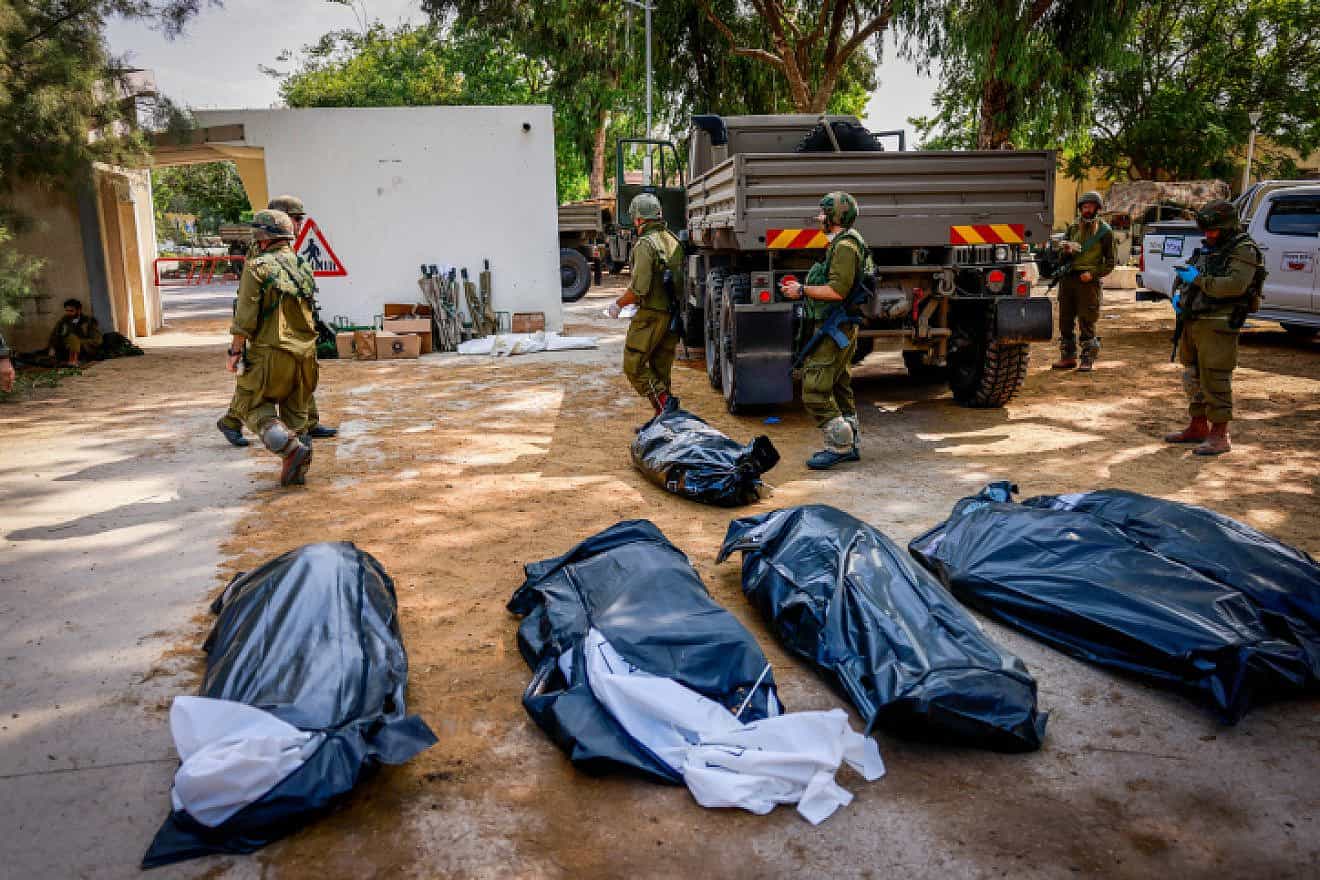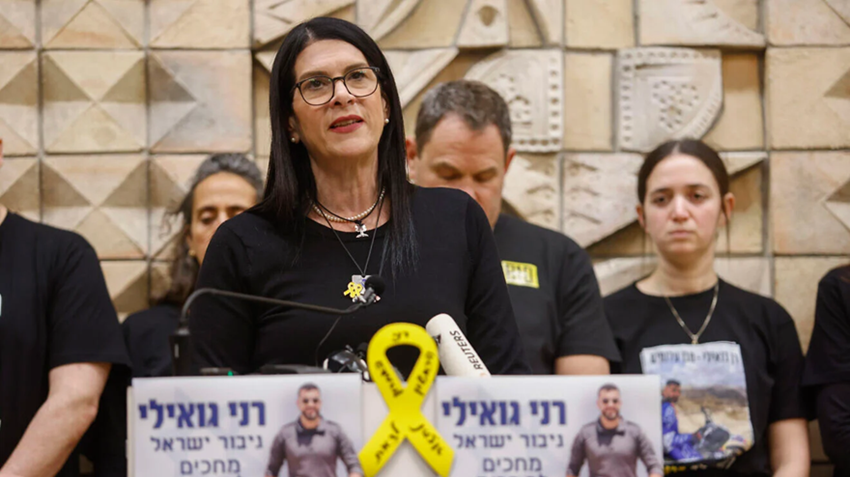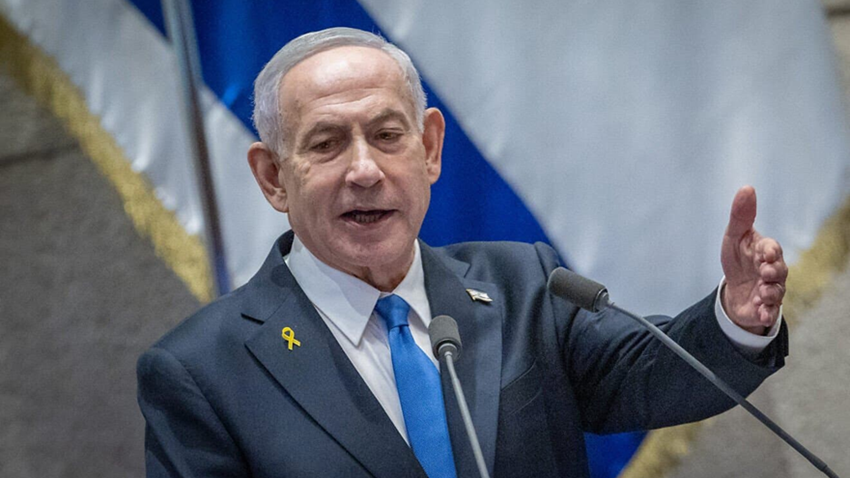Israeli soldiers remove bodies of of Israeli civilians in Kibbutz Kfar Aza, near the Israeli-Gaza border, in southern Israel, October 10, 2023. Photo by Chaim Goldberg/Flash90.
By Judith Segaloff
Six weeks after the barbarous Hamas assault on Israeli communities and the outbreak of the war, Education Minister Yoav Kisch announced plans to build an official heritage center, complete with a museum, memorial and an information facility to educate the public about the cataclysmic events of Oct. 7.
“We are waiting for the final draft of the government decision,” said Kisch, speaking on Thursday at the official opening of the first school for evacuee children, which was set up near Ein Gedi alongside the Dead Sea.
“It will be voted on next week, and then we will initiate a committee that will structure the new museum. It will be like [the] Yad Vashem [Holocaust Museum], but focusing on the events of Oct. 7,” he added.
Even as the security services work to unravel the myriad details of the murderous Oct. 7 rampage, and are upending Gaza to find Israel’s kidnapped hostages, Kisch says it is not too early to memorialize and begin to collect all the data that has already emerged.
“We want to start early so we can have as many actual things as possible to show what happened on that day,” Kisch told JNS. “There are stories of heroes and of people who sacrificed their lives for the safety of others and more will emerge. The center will give us one single address to collect all the data and everything that is needed to preserve the memories and educate the public and our children.”
As to where the center will reside, Kisch says it will likely be either in Jerusalem or in one of the ravaged Gaza border communities. That will be decided, he said, after the ministries establish a team to work on it.
“The official center, headed by renowned professionals will impart the heritage and educate future generations. While it is going to take many months to finalize things, we expect to get the process started this month. Materials and budgets from government authorities will be transferred for this purpose,” Kisch continued.
The Education Ministry has made remarkable efforts to help traumatized students deal with wailing sirens, constant shifts in safety situations, a deluge of homeless, displaced and emotionally exhausted parents and children, and students outside of war zones who were affected by the sudden conflict that sent their fathers and teachers marching to join the army reserves. Keeping in touch with parents on social media, the Ministry of Education has been in constant coordination with ever-changing Home Front directives, working with individual municipalities and giving parents updates.
“We are fortunate that we are spread all over the country and were able to build a totally new education system in one month,” Kisch asserted.
He pointed to the three main issues: the influx of refugees in over 300 hotels all over the country, the absence of actual school buildings in many places, and the restructuring of educational manpower to accommodate the relocated children and the absence of male teachers due to army service.
To address staffing issues, the schools created a huge campaign to attract volunteers, Kisch said. “Many of the education staff were also displaced. Anyone with a degree in education was invited to work for two months with evacuees. Many moved to Eilat and the Dead Sea willingly, some were on sabbatical, some were pensioners.”
To solve the space problem, the Education Ministry created kindergartens in public areas of hotels and in existing schools near the evacuees. They established four new schools, two in Eilat, one in the Arava and another in the Dead Sea area, converting existing buildings where possible.
Then there was the challenge of obtaining books, computers and other equipment. Kisch said they salvaged whatever they could from the ravaged communities opposite Gaza and purchased the rest.
“The Ministry of Education’s first priority since the beginning of the war is to care for, accompany and assist children and students who were evacuated from their homes,” Kisch said recently at an inauguration of a new school in Eilat for 300 students who were evacuated from Kiryat Shmona.
Since the outbreak of the war, the city of Eilat has accommodated about 15,000 students from communities from the south and north. There are currently 374 education centers functioning in hotels for evacuated students.
Source: JNS


































